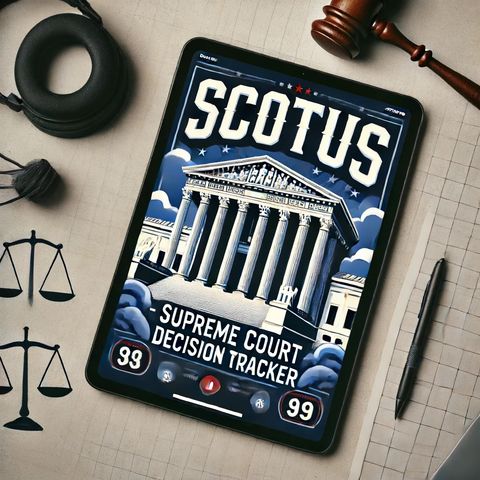Supreme Court's Chevron Deference Reversal Sparks Debate on Judicial Reform

Sign up for free
Listen to this episode and many more. Enjoy the best podcasts on Spreaker!
Download and listen anywhere
Download your favorite episodes and enjoy them, wherever you are! Sign up or log in now to access offline listening.
Supreme Court's Chevron Deference Reversal Sparks Debate on Judicial Reform
This is an automatically generated transcript. Please note that complete accuracy is not guaranteed.
Description
The recent decision by the Supreme Court to overturn the 1984 Chevron v. Natural Resources Defense Council ruling represents a significant shift in U.S. jurisprudence. Known simply as "Chevron deference,"...
show moreThe implications of reversing Chevron deference could be substantial and multifold. Essentially, this decision curtails the autonomy previously enjoyed by federal agencies, compelling a stricter adherence to statutory text. With this reversal, agencies may now face increased judicial scrutiny regarding their interpretations of federal laws, potentially leading to a surge in litigations as interpretations previously deemed acceptable under Chevron deference are challenged.
Additionally, with the removal of Chevron deference, Congress may need to take a clearer stance in its legislative language, leaving less up to interpretation by federal agencies. This could lead to a more transparent and direct legislative process but may also slow down the implementation of new regulations as agencies may become more cautious and Congress may need to be more detailed in its directives.
Beyond the Chevron reversal, discussions around Supreme Court reform are gaining traction. One of the most notable voices in this conversation is Amherst professor Austin Sarat, who has argued for reforms including term limits for Supreme Court Justices. Advocates for such reforms argue that they could reduce the escalating partisanship associated with Supreme Court appointments and decisions, potentially restoring public confidence in the judiciary.
Reform proposals vary, but common suggestions include setting fixed terms for justices rather than the current lifetime appointment system. Some suggest an 18-year term, allowing for a vacancy every two years, which they claim would standardize the appointment process and reduce partisan warfare over court vacancies.
As the U.S. Supreme Court continues to make landmark decisions that shape the legal landscape of the nation, debates over its role and structure are expected to intensify, spotlighting the balance of power between the judiciary and other branches of government. The decision to overturn Chevron, along with ongoing discussions on court reforms, underscores a dynamic period in U.S. legal history, reflecting evolving perspectives on the structure and power of the judiciary.
Information
| Author | QP-4 |
| Organization | William Corbin |
| Website | - |
| Tags |
Copyright 2024 - Spreaker Inc. an iHeartMedia Company
